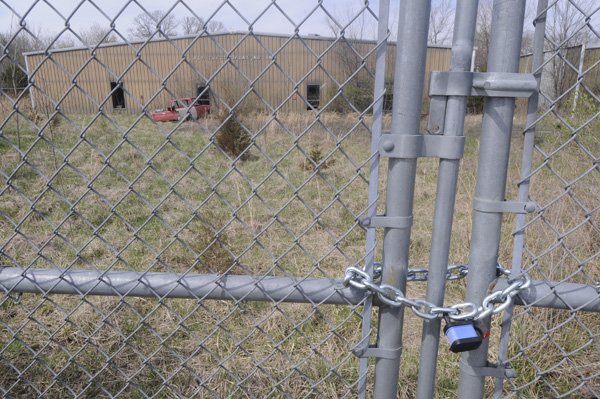FAYETTEVILLE — A state agency announced a plan Thursday to spend $2.4 million to clean up a Fayetteville industrial site, contaminated with hazardous substances and abandoned more than a decade ago.
The Arkansas Department of Environmental Quality Thursday announced the contract with Southern Environmental Management and Specialties Inc. to clean the former R&P Electroplating location at 2000 Pump Station Road.
The site is next to the West Fork of the White River, raising local concern over the years about potential contamination of a waterway that leads into the region’s drinking supply in Beaver Lake.
Mayor Lioneld Jordan and others familiar with the long history of the situation were amazed a cleanup would be undertaken after 10 years of trying to get something done.
“We worked years and years on this. This is really exciting,” Jordan said Thursday evening. “It’s great for the city to get it cleaned up.”
During the 1990s, the city was cited by the U.S. Environmental Protection Agency for contaminants at the wastewater treatment plant, said Jeremy Pate, the city’s director of development services. The contaminants were traced back to the discharge from the electroplating shop, he said Thursday.
Pate said a strip of city-owned land lies between the river and the R&P property line. That area of the river is used primarily for fishing and kayaking. Although there is soil contamination on the R&P property, Pate said there was no indication that the river was contaminated.
“I’m thrilled the contract has been let,” said Steve Clark, head of the Fayetteville Chamber of Commerce. The chamber has a contract with Fayetteville to promote economic development within the city.
Clark said the R&P Electroplating site will be a good location for future commercial or industrial development.
“It’s a benefit to the city,” he said.
The site was home to a metal plating facility from 1974 to 1997, according a 2007 report by the Department of Environmental Quality. The agency has considered the site a priority for cleanup for years but had never funded it.
R&P Electroplating went out of business in 1997. The company had a history of violations involving its wastewater discharge permit, including one incident of discharging high concentrations of cyanide and heavy metals that severely damaged Fayetteville’s sewer treatment plant. The city spent $21,000 repairing the plant.
Police officers about a year after the business closed were checking an open gate when they discovered the abandoned facility housed several hazardous substances. Those included cyanide, acid plating solutions, solvents, acids, caustic soda beads and soda ash, oils, spent solutions and sludge, according to a 2006 report by the environmental quality department.
The contracted announced Thursday will pay for removal of contaminated soil, abandoned equipment and structures on the site, according to state agency. The work should be completed in about four months and the land will be restored for industrial use, the agency said in a statement.
Clyde Rhodes, the head of the agency’s hazardous waste division, was in a meeting and not available to discuss further details of the contract.
Southern Environmental Management and Specialties Inc. is based in Baton Rouge, La.
Hugh Earnest, who worked to try to get the site cleaned when he was chief administrative officer under former Mayor Dan Coody, said Thursday he was glad to hear about the cleanup of a site “that I and others were concerned about.”
After the site was vandalized in 1998, “some of the more egregious substances” were removed but the site remained contaminated. It went on the state’s priority list for clean up in 2000 so state money would be available for long-term investigation or remediation, according to the 2007 report.
The report also noted 42,081 gallons of liquid waste and 410,200 pounds of solid and sludge waste were removed by Haz-Mert Inc. in 1999 under an emergency order from the U.S. Environmental Protection Agency, but the buildings, equipment and soil were not removed.
The Arkansas Democrat-Gazette contributed to this report.

